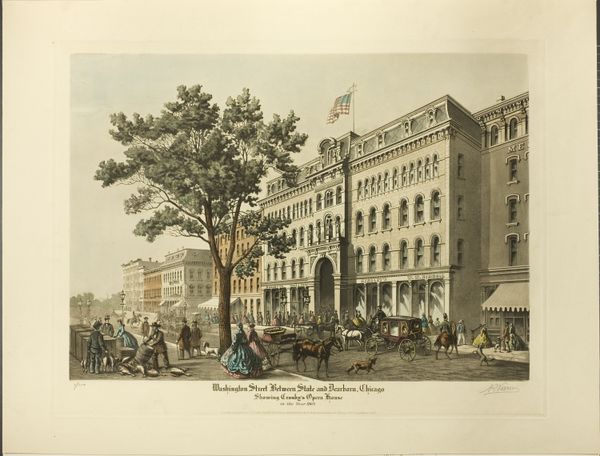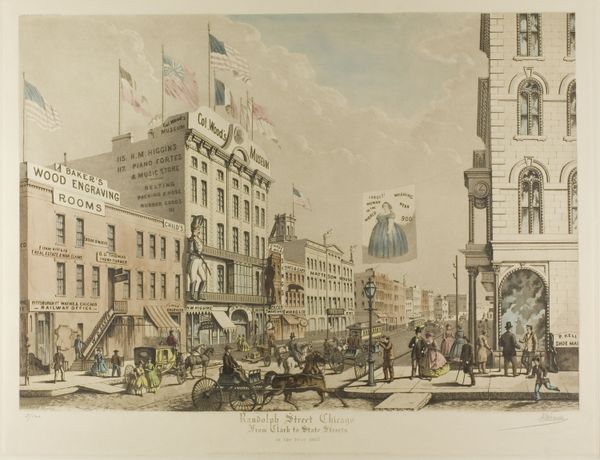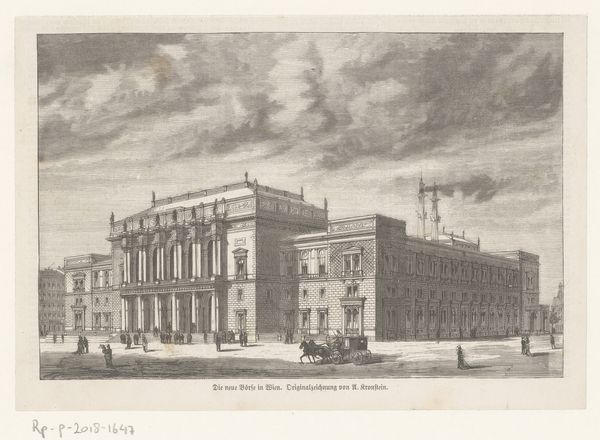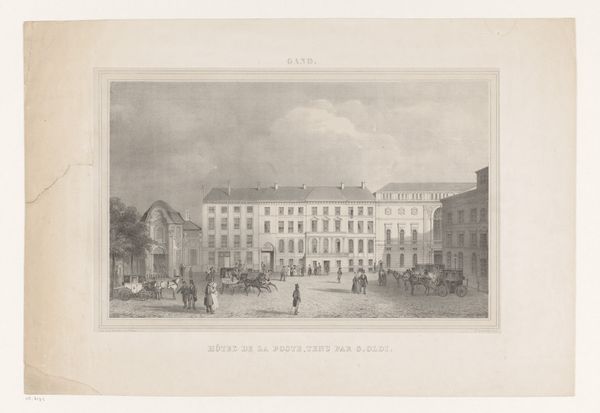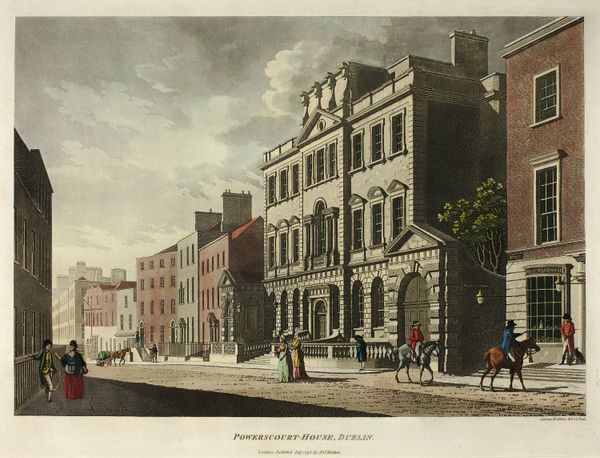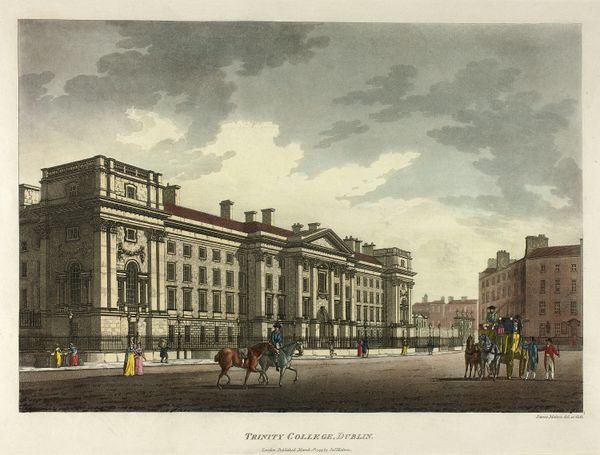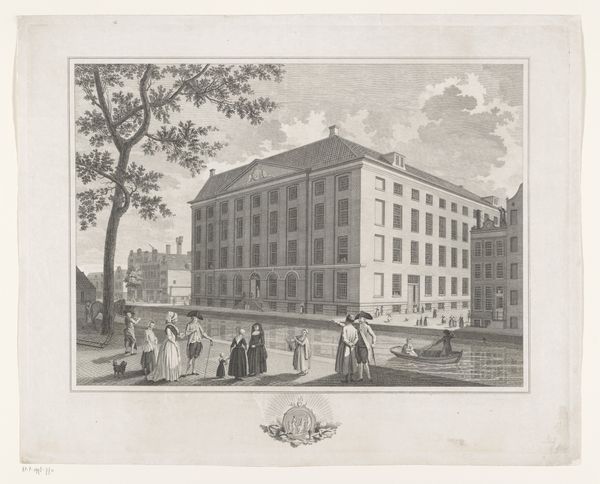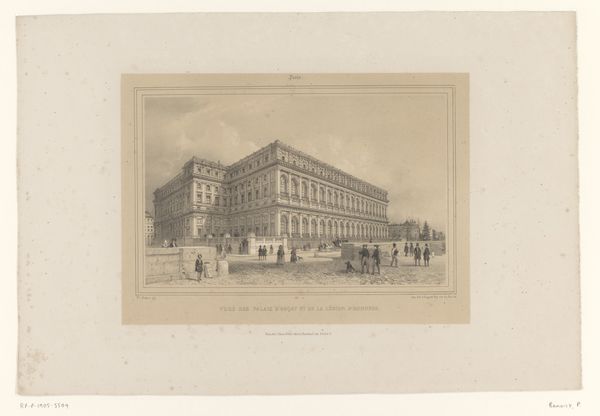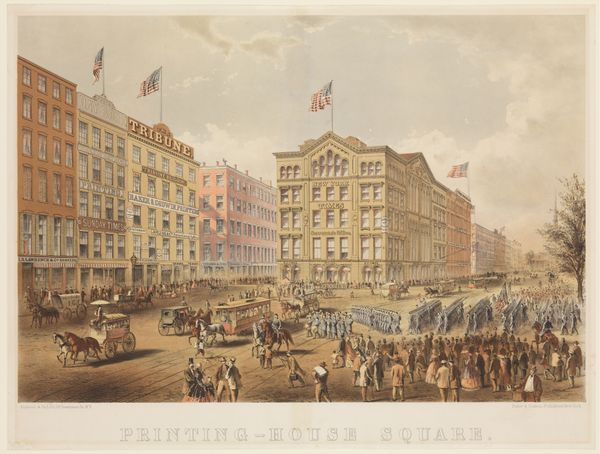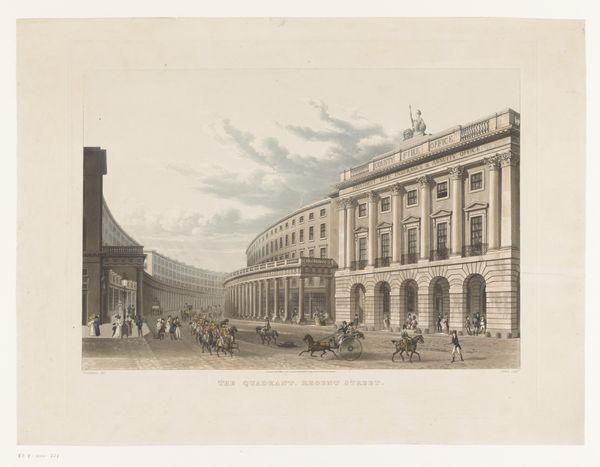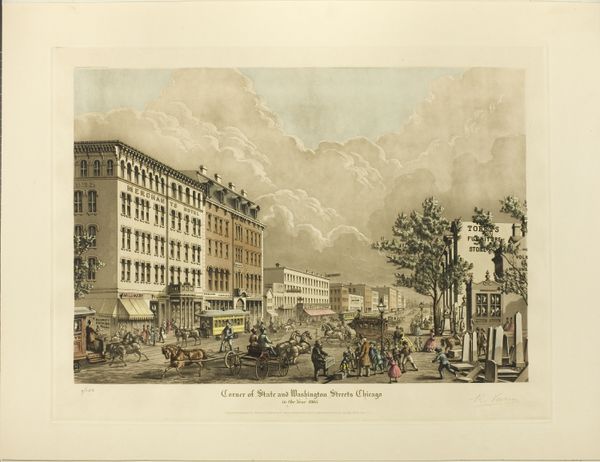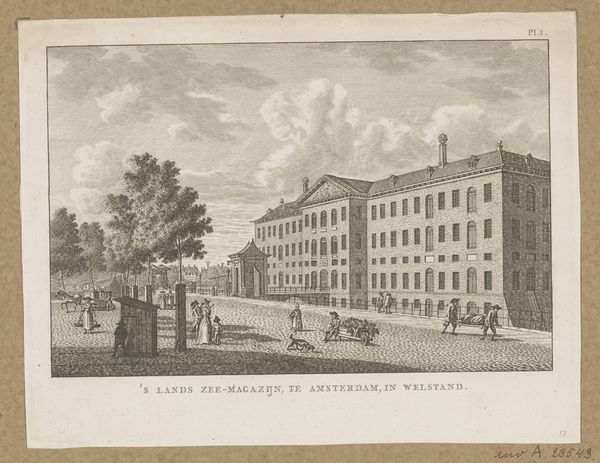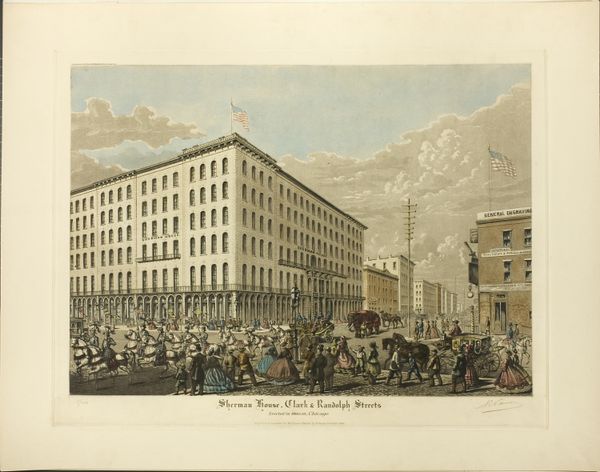
N.W. Corner of Dearborn and Monroe Streets, Chicago, Showing the Post Office Building in the Year 1865 c. 1927
0:00
0:00
drawing, lithograph, print, paper
#
drawing
#
16_19th-century
#
lithograph
# print
#
paper
#
historic architecture
#
site analysis
#
cityscape
#
realism
Dimensions: 391 × 542 mm (image); 453 × 487 mm (plate); 539 × 709 mm (sheet)
Copyright: Public Domain
Editor: Here we have Raoul Varin’s “N.W. Corner of Dearborn and Monroe Streets, Chicago, Showing the Post Office Building in the Year 1865,” a lithograph from around 1927. The scene bustles with horse-drawn carriages and figures in period dress, a window into a past Chicago. It really captures a sense of daily life. What do you see when you look at it? Curator: I'm immediately drawn to the labor implied, not just within the image – the coachmen, the figures seemingly engaged in commerce – but also the labor *of* the image itself. Lithography, a relatively accessible printmaking process, allowed for wider dissemination of such views. Consider the materials: paper, ink, the lithographic stone. Editor: Right, it makes you wonder who had access to images like these, and what kind of value they placed on them. Curator: Precisely! Who was consuming this image, and what was their relationship to the burgeoning urban landscape depicted? The mass-producibility via lithography democratizes the image to some extent, but it simultaneously positions it as a commodity. It feeds a particular hunger for seeing and owning a piece of the city. Look at the minute details in the architectural renderings; consider the sheer effort put into such a meticulous record. How does that change our perception? Editor: That's fascinating; the idea of the image as a commodity itself. I never really considered that, but now I’m seeing how the print medium really opens that idea up. Curator: Exactly. And notice, too, that it's rendered after the fact, from 1927. We must consider how distance and consumption mix into nostalgia and change our experience of this scene. Editor: So, it’s less about a specific historical moment and more about the ongoing process of representing and re-representing history through material means. Curator: Exactly! It really reveals the complex interplay between art, labor, and societal values in both the 19th and early 20th centuries. Editor: I’ll definitely remember to consider the means of production when I look at art now. Curator: An essential practice in art appreciation.
Comments
No comments
Be the first to comment and join the conversation on the ultimate creative platform.
